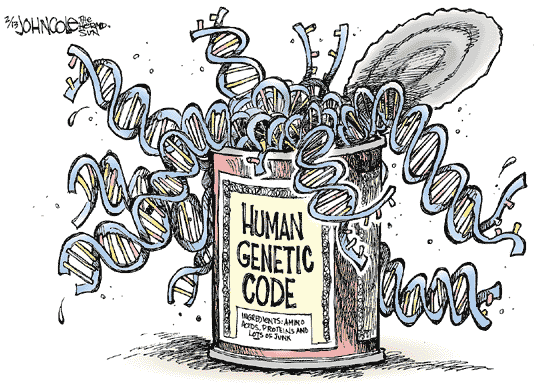Our Projects, formally speaking
1. Genotype - Phenotype relationships in humans.
We are developing novel methods for linking human whole genome
variation with human disease and trait variation. We apply these
methods to multiple datasets in the contexts of prematurity,
autism, heart disease and more
[20,
29, 32, 34, 36, 38, 39, 43].
2. Genotype - Phenotype relationships between mammals.
We develop novel methods to link trait evolution in the mammalian
tree to whole genome evolution in over a hundred species.
Application of these methods allow us to shed new light on human
genome function, on human disease and on human evolution
[29,
34, 35]. See our
"Forward
Genomics" web server.
3. Extracting genetic knowledge from high throughput genomic
assays.
High throughput genomic assays are most often used to make
biochemical discoveries. We develop methods to extract genetic and
developmental knowledge from these assays
[27,
28, 31]. Through joint work with
Sue
McConnell we take special interest in the developing
neocortex
[29,
41].
Also see our popular
GREAT
web server for the cis-regulatory interpretation of high
throughput genomic datasets.
4. Vertebrate transcription regulation.
Much of our work relies on our strong foundations in the study of
vertebrate gene regulation
[9-11,
14, 15, 18, 22, 25, 27, 29-33, 35, 38-42, 44].
See our
PRISM
resource of predicted transcription factor functions and
COMPLEX resource for
predicted transcription factor dimers and complexes. Also see our
zCNE
resource of conserved non-coding (likely gene regulatory)
sequences in the zebrafish genome.
5. Vertebrate genome evolution.
We are extremely well versed in human and vertebrate genome
evolution
[9-11,
14, 17, 18, 22, 23, 25, 26, 29, 33-35, 37, 39, 40]. Notably,
we discovered ultraconservation and correctly postulated that many
of these elements are developmental enhancers. We also showed that
mammalian ultraconserved elements evolve under extreme purifying
selection, and that they are almost never lost during mammalian
evolution
[9,
23, 25]. We also discovered the first developmental
enhancers conserved between human and protostomes
[33],
attempted to group human conserved non-coding DNA into paralog
families
[10],
and studied the co-option of mobile elements into cis-regulatory
roles
[18,
22, 26, 41].
6. Evolutionary Developmental Biology ("evo devo").
We have done work in the field of evolutionary developmental
biology
[29,
33-35, 43], including a first survey of developmental
enhancers (including a penile spine/vibrissae enhancer) uniquely
lost in humans
[29],
fueled by our deep interest in phenotype - genotype relationships.


